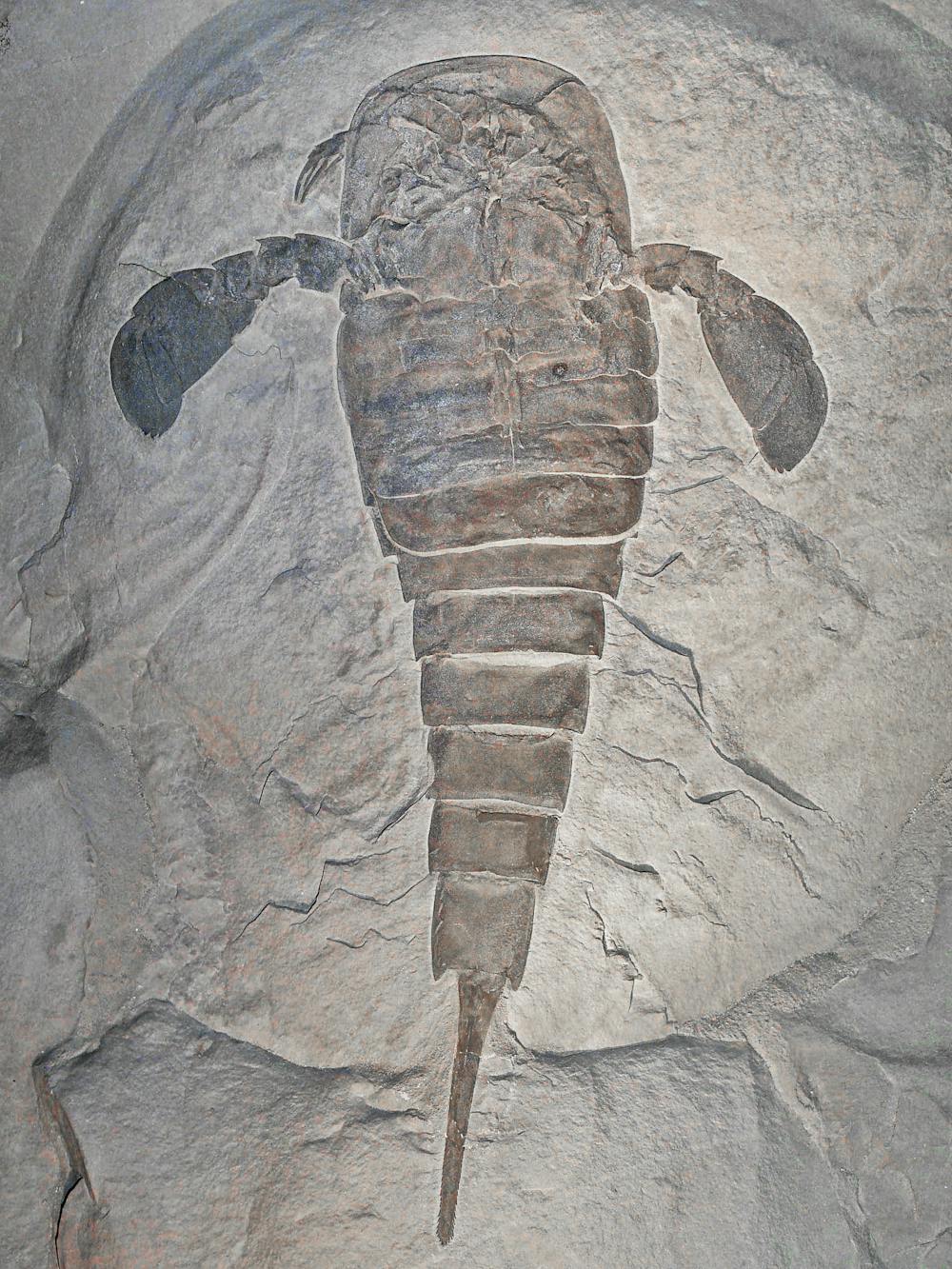Palmichnium gallowayi, a 460-million-year-old fossil trackway of a sea scorpion, from upstate New York, is one of the earliest signs of animal life on land.

Life reconstruction of the eurypterid Brachyopterus. Image credit: Nix Illustration / CC BY 4.0.
The trackway was produced during the Middle Ordovician period, around 460 million years ago.
The ancient animal that produced it was about 15 cm long, small in comparison to some of its younger relatives, that reached 2.5 m long.

It belonged to an extinct group of aquatic (chelicerate) arthropods called eurypterids, better known as sea scorpions.
Eurypterids are the state fossil of New York and were first discovered in that state.
The fossil was first published in 1932, but the type of eurypterid that made it was misinterpreted and the significance of the fossil was not recognized.

Paleontologists Simon Braddy and Kenneth Gass redescribed the trackway in their new paper in the Journal of Paleontology.
“The trackway was probably produced by a eurypterid related to Brachyopterus,” they said.
“It likely fed on small prey, using its appendages to explore the substrate for mollusks, crustaceans and worms.”
The fossilized trackway was found in the Martinsburg Formation near Kingston in New York State.
It occurs on an ancient tidal channel in the upper part of a delta, as evident by the mud-cracked surface.

The trackway has opposing groups of five tracks, arranged in a chevron, either side of a wide medial impression (tail drag).
This indicates that the animal responsible used an in-phase swimming stroke, so was not well-adapted for walking on land.

Sea scorpion trackways are generally very rare worldwide.
The eurypterid probably crawled onto the shoreline, as part of its reproductive life-cycle, providing the earliest evidence for the ‘mass-moult-mate’ hypothesis, i.e. that eurypterids migrated en-masse into nearshore environments to molt and mate, like living horseshoe crabs.

“This fossil trackway is important because it is the earliest evidence of sea scorpions, the ancestors of scorpions, moving onto land,” Dr. Braddy said.
“The oldest tracks on land were produced by the ancestors of millipedes around 500 million years ago, on ancient coastal dunes (in New York State and Ontario) and tidal flats (in Quebec and Wisconsin).”
Source: sci.news








